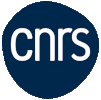 On October 03th 2025, Suraj Thyagarajan from University of Singapore now postdoctoral fellow at SPINTEC will give us a seminar at 11:00 entitled
On October 03th 2025, Suraj Thyagarajan from University of Singapore now postdoctoral fellow at SPINTEC will give us a seminar at 11:00 entitled
Spectroscopic Signatures of Chirality and Resonances for Designer Magnonics
Place : IRIG/SPINTEC, auditorium 445 CEA Building 10.05 (presential access to the conference room at CEA in Grenoble requires an entry authorization. Request it before September 22th at admin.spintec@cea.fr)
video conference : https://univ-grenoble-alpes-fr.zoom.us/j/98769867024?pwd=dXNnT3RMeThjYStybGVQSUN0TVdJdz09
Meeting ID: 987 6986 7024
Passcode: 025918
Abstract : Chiral spin textures are the smallest magnetic entities, offering topological stability and tunability, making them ideal for energy-efficient computing1,7. Their equilibrium properties arise from the interplay between collinear exchange and chiral Dzyaloshinskii-Moriya interactions (DMI), stabilizing structures like skyrmions. In contrast, their dynamic behavior is governed by non-equilibrium phenomena such as chiral damping. In the first part of my talk, I will present our studies on equilibrium magnetization in a tunable chiral multilayer platform1. Using optical and X-ray spectroscopy, we observed that the Heisenberg exchange constant (A)3 and DMI strength (D) can vary inversely—challenging conventional theories. Element-specific insights highlight the key role of orbital magnetism in tuning chirality2.
Next, I will address non-equilibrium phenomena, focusing on chiral damping (CD). Our first time observation of chiral damping using BLS technique, allows exploration of this quantity regardless of magnetic anistropy, earlier limited to PMA systems4. The origin of this effects needs to be understood, our measurmenst reveal interesting correlations with chiral energy and magnetic textures5.These findings deepen our understanding of non-equilibrium chiral spin dynamics.
Armed with the tunability of equillibrium spin texture characteristics, we explored the microwave resonance behavior of chiral multilayers. Broadband microwave and Lorentz microscopy measurements revealed a distinct hysteretic resonance from dense Néel spin textures, which can be reconfigured linearly or non-linearly via skyrmion nucleation under tailored magnetic fields. This tunability enables reproducible magnon responses well-suited for reservoir computing6. Our integration of skyrmions into tunnel junctions further establishes their potential as energy-efficient, all-electrical computing bits7.
References :
- Soumyanarayanan, A, et al. “Tunable room-temperature magnetic skyrmions in Ir/Fe/Co/Pt multilayers.” Nature materials 16, (2017): 898-904.
- T.S. Suraj, et al., “Orbital anisotropy evolution with symmetric and asymmetric exchange” (in Prep.)
- Böttcher, T., T. S. Suraj, et al. “Quantifying symmetric exchange in ultrathin ferromagnetic films with chirality”. Physical Review B, (2023), 107(9), 094405.
- Dae-Yun Kim, …, T. S. Suraj, et al., “Chiral damping of magnons”. Physical Review Letters, (2024), 133(15), p.156704.
- T S. Suraj et al. “Anatomy of chiral damping” (in Prep.)
- T.S. Suraj, et al., “Dynamically programmable GHz resonances of chiral spin texture ensembles” Submitted (2024).
- S. Chen, .., T. S. Suraj, et al.“All-electrical skyrmionic magnetic tunnel junction”. Nature (2024) 627, 522.
Biography : Dr. Suraj Thyagarajan is currently a Postdoctoral Fellow at SPINTEC, CEA Grenoble, France, in the Magnetic Sensor Division, where he is working on electro-optic control of skyrmions for energy-efficient computing and sensing applications. Prior to this, he was a Postdoctoral Fellow in the Spin Technology for Electronic Devices (SpEED) group, Department of Physics, at the National University of Singapore (NUS), under the supervision of Prof. Anjan Soumyanarayanan. He also served as an Adjunct Fellow at the Institute of Materials Research and Engineering (IMRE), A*STAR, Singapore. His research specializes in spintronics, particularly the study of equilibrium and non-equilibrium magnetic phenomena in chiral spin texture ensembles, with applications in spin-wave-based devices for unconventional computing and RF technologies. He earned his Ph.D. in 2021 from the Department of Physics at the Indian Institute of Technology (IIT) Madras, under the guidance of Prof. M. S. Ramachandra Rao and Prof. K. Sethupathi.




